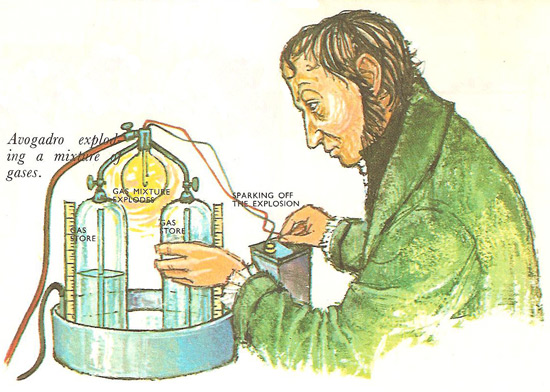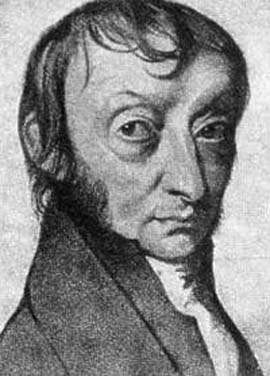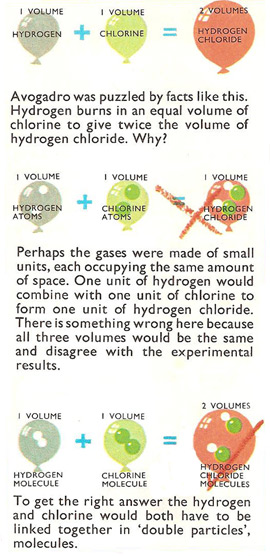Avogadro, Amedeo (1776–1856)



Amedeo Avogadro was an Italian physicist and chemist who first realized that gaseous elements might exist as molecules which contain more than one atom, thus distinguishing molecules from atoms. In 1811 he published the hypothesis, now known as Avogadro's law (see below) – that equal volumes of all gases under the same conditions of temperature and pressure contain the same number of molecules – but his work in this area was ignored by chemists for 50 years. The Avogadro constant, or Avogadro number, N, is the number of molecules in one mole of a substance.
Avogadro's law
The amount of space taken up by a mass of gas molecules depends on the temperature and pressure of the gas. Avogadro's law is concerned with the amount of space taken up by different gases when the temperature and pressure are not allowed to vary but are kept at the same value for all the gases under consideration.
Avogadro made an inspired guess, which later turned out to be true. Because it was only a guess and there was at the time no way of proving its validity, the statement was called a hypothesis, a word meaning a guess. Later on when it had been proved true. Avogadro's hypothesis became Avogadro's law.
The law states that equal volumes of all gases under the same conditions of temperature and pressure contain the same number of molecules.
In other words, if the temperature and pressure are kept the same for a whole series of different gases, each separate molecule of each gas occupies the same amount of space. A molecule of hydrogen takes up the same amount of space as a molecule of oxygen or carbon dioxide if the pressures and temperatures of all three are absolutely identical.
For a man who could not even prove that molecules existed, this was quite a startling statement to make. In fact, his law was the direct result of a guess that there were such things as molecules – atoms grouped closely together in small units. The other scientists of the day just believed that matter was made of single separate units called atoms.
Avogadro's guess about molecules was sparked off by some unexplained results obtained by Joseph Louis Gay-Lussac. Gay-Lussac had shown that two liters of hydrogen completely burned in one liter of oxygen and two liters of steam formed if the gases were kept at the same temperature and pressure throughout. The volumes of these gases bore a simple ratio to one another. So did the volumes of any other reacting gases and their gaseous products.
Avogadro wanted to know why this happened, so he studied and puzzled over these results, trying to work out a reason for them.
His reasoning is best seen from the reaction in which hydrogen burns in chlorine to form hydrogen chloride gas. One liter of hydrogen burns exactly in one liter of chlorine to form two liters of hydrogen chloride gas. Perhaps one atom of hydrogen combined with one of chlorine to form one unit of the compound, hydrogen chloride. Then one volume would combine with one volume to give one volume. This disagrees with the experimental results so it cannot be correct. But it would explain the results if the hydrogen and chlorine atoms were both grouped together in pairs and each pair or group of atoms were to occupy the same amount of space.
So Avogadro invented the molecule and formulated his hypothesis that every gas molecule under the same conditions of temperature and pressure occupied the same amount of space.


